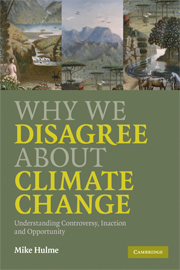Today, COMPASS published a commentary in PLOS Biology
on the journey from science outreach to meaningful engagement. This post
is part of a series of reactions, reflections, and personal experiences
we hope will expand the conversation. Read the summary post here, or track the conversation by searching
for #reachingoutsci
A few years ago, I found myself at a retreat with a group of highly accomplished scientists from around the continent. Why, I don't know. I suspect my invitation came much as it would to a team's equipment person, who are still needed during practice drills on the road to fetch all the loose balls.
On the penultimate evening, the discussion turned to the challenge of balancing science and outreach. The very unscientific activities of the retreat had wore down the competitive academic armour that most successful scientists wear like second skin, and revealed a surprising vulnerability among the group. Most everyone held an existential fear of this mysterious force, which most often went by the moniker "they".
I delivered an eloquent speech about the psychological legacy of years spent jumping though hoops in the hierarchical academic world and how the greatest obstacles we must overcome in life are often internal. Either that or I channeled old-country centenarian grandmother and said "What the %$@* are all of you talking about?". It's been a few years, so I don't recall the exact wording.
It is healthy for a scientist to be cautious about outreach. Really.
Yet there’s a big misconception among young scientists that "the academy" frowns upon those who engage with the public. Speaking up is not the issue. What scientists really frown upon is simply people who don’t know their stuff. If you're consistently good at your job, you really can talk to the public without fear of serious recrimination by your peers.
Those doing outreach might experience some backtalk, but so might those who get teaching buyouts from a grant, win external fellowships or publish in general science journals. Some of that is jealousy. The politics of academics are a lot like that of junior high, except it is a unique junior high for Type A adults who studied too hard in actual junior high to fully graduate past that stage of psychological development. I keed, I keed. Sort of.
I think the key to managing the balance between science and outreach in the competitive research world is to be a good scientist. And, by this, I mean two different but related things, things that I wish I had been told years ago:
1. Before even thinking about outreach, you have to do your job and do it well. That means publishing in top journals, being cited by others, the whole ball of statistically significant wax. Why should anyone outside of scientist listen to a scientist who is not consistently doing research that is respected by others in the field? And respected, does not mean loved. People respect research that is thorough and well-supported, even if they disagree with the findings.
2. We're scientists, why not be scientific about outreach. Be systematic. Do research on the role of scientists in society. Evaluate different methods and assumptions. And when the time comes, be precise.
Be harsh - with yourself
To be scientific about outreach, you need to be extremely harsh with yourself about why you are getting engaged beyond the scientific world. I cannot stress this enough, I did not think about this nearly enough before starting this blog.
What values are motivating your engagement, and how are those values affecting the public statements you plan to make? It is perfectly acceptable to advocate. We are citizens, we have every right to express our views. However, if we are not clear with people about when you are making a scientific or "objective" judgement (i.e. our analysis shows climate change will lead to an increase in coral bleaching) versus a value judgement or a "should" statement (i.e. we "should" reduce greenhouse gas emissions), then we are only doing harm to the overall scientific enterprise.
"Stealth" advocacy, as Roger Pielke Jr. discusses in The Honest Broker, can lead to the politicization of science. If the audience disagrees with my "should" statement, they may then question my objective statement or my results. They also may, quite reasonably, conclude that I am abusing the position of authority granted to me by the public as a consequence of my title and degree to advance my personal agenda. The perception of this dynamic is very much at play in climate change discourse, where a lot of scepticism of the science is rooted in a mistaken belief that the core of climate science has been politically compromised.
This means it is critical to think very carefully about who you are representing when you deal with the public or policymakers, be it in a public seminar, a policy hearing or a blog post. Are you speaking on behalf of your specific new research? Your greater body of work? Your field? Or "science"? Always keep in mind that while you may think you are speaking on behalf of your own research, the audience may think you are speaking on behalf of "science". Sometimes highlighting an anomalous result, like a resilient coral reef that is an exception to the global rule, can end up misleading the public.
Looking back, I'm glad that the scientists at the retreat were a bit reticent about outreach, even if I think the reasoning was wrong. If I've learned anything from my interactions with the folks at COMPASS and other science-public intermediaries, it is that we should be cautious about outreach just like we are cautious about research. We want to do both well, don't we?









